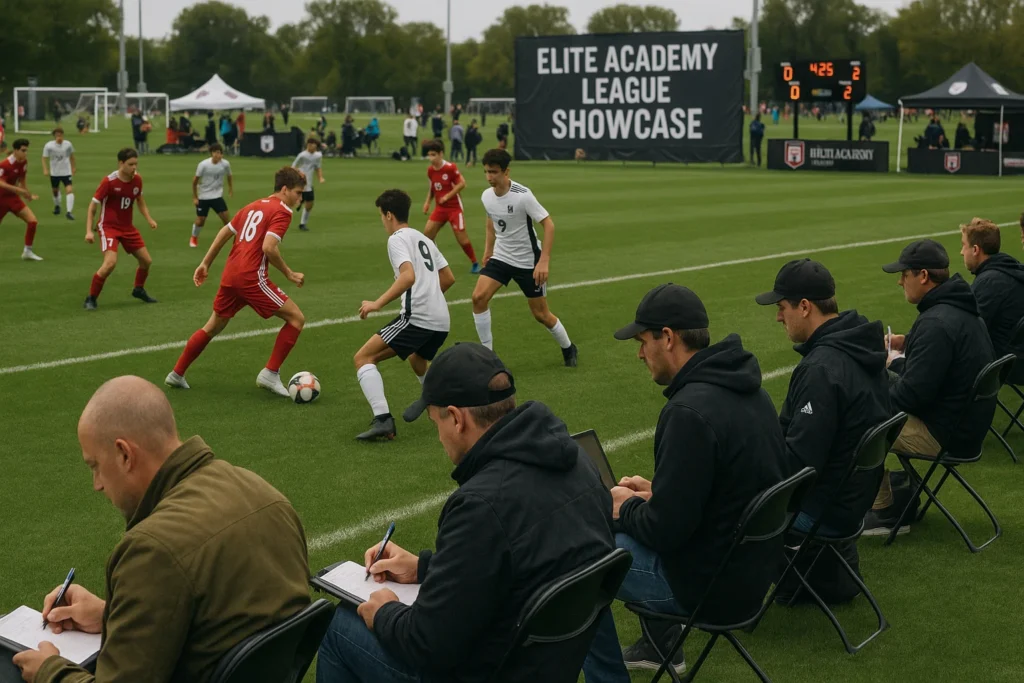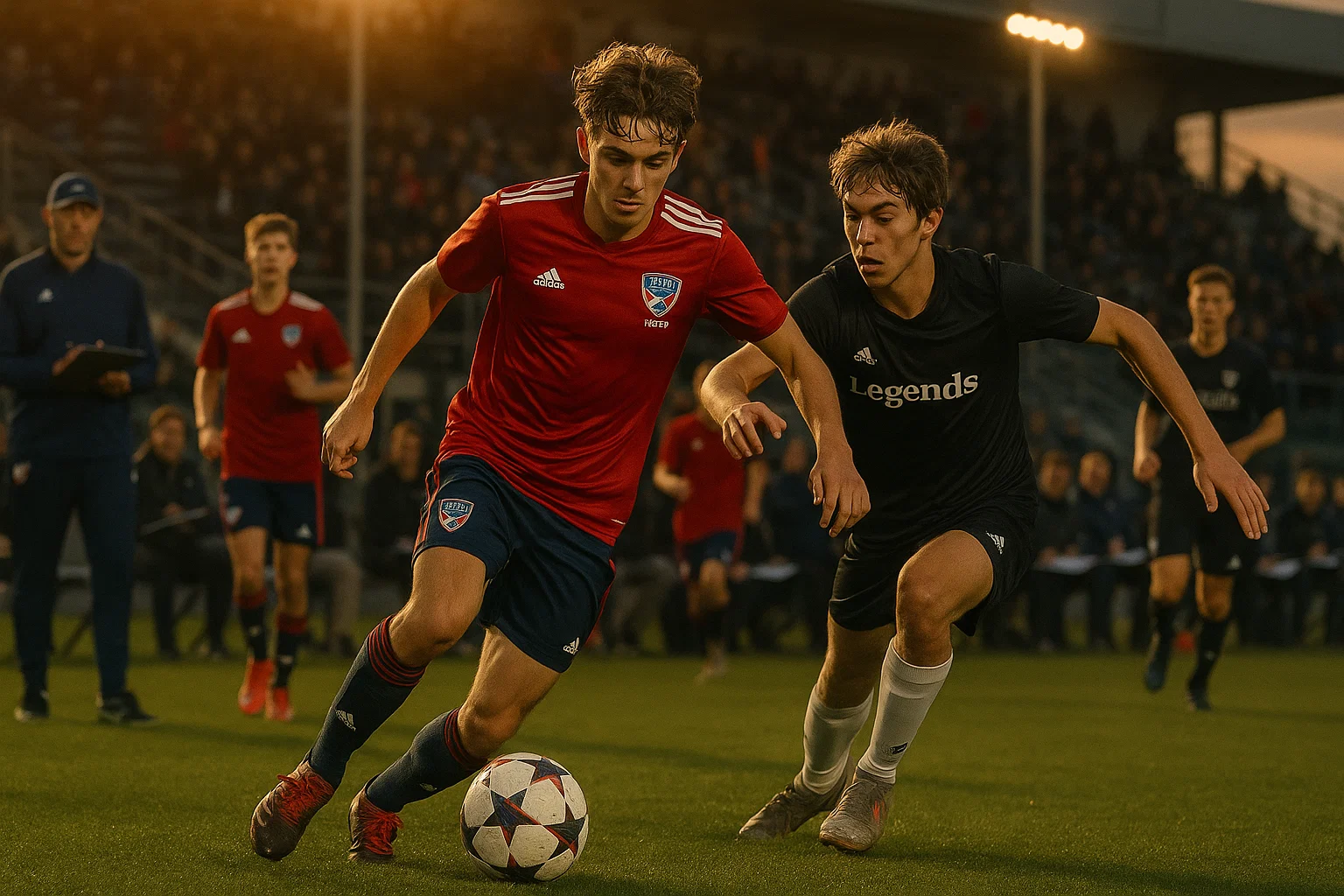Introduction: A New Era in American Youth Soccer
Let’s face it — the U.S. has always had a complicated relationship with soccer. While the rest of the world bleeds football, America has historically been more NFL Sundays than Super Sundays in soccer terms. But times are changing, and at the heart of this revolution is something quietly gaining momentum: the Elite Academy League (EAL).
You might’ve heard whispers of it, or maybe you’re a die-hard youth soccer parent who’s been living and breathing matchdays since U-9s. Either way, the Elite Academy League is a big deal. Not just a league — it’s a philosophy. A growing movement focused on high-level competition, development-first ethos, and bridging gaps in the ever-evolving American soccer landscape.
So buckle in. We’re diving into 3000 words of pure soccer goodness, breaking down the what, why, who, and how of the Elite Academy League.
The Origins of the Elite Academy League
From the Ashes of the DA
To understand the Elite Academy League, you have to rewind a bit. The U.S. Soccer Development Academy (DA) was once the crown jewel of elite youth soccer. Founded in 2007, it was meant to be the gold standard. The DA offered structured training, fewer games with more meaningful competition, and a direct link to U.S. Soccer and professional scouts.
But then, COVID-19 hit. And with the pandemic came the sudden collapse of the DA in 2020.
Youth clubs were left scrambling. Where would the top-tier players go? Would they regress? Would the U.S. soccer development pipeline collapse?
Enter the Elite Academy League — a phoenix rising from the DA’s ashes.
A Club-Driven Movement
Formed by former DA clubs, the EAL was created to give competitive players a pathway without the overreach of federation control. Instead of being bound to the whims of U.S. Soccer, the league would be club-run, development-focused, and more adaptable to local and national needs.
In short: built for the players, by the people who know them best — the clubs.

What Is the Elite Academy League?
Let’s break it down in simple terms:
- Founded: 2020
- Ages: Primarily U13–U19
- Scope: Nationwide, divided into regional conferences
- Mission: To provide a high-level platform that prioritizes development and exposure
The Elite Academy League isn’t trying to replace MLS NEXT (which succeeded the DA as U.S. Soccer’s pro league pathway), but rather complement it. It’s a strong second-tier option with many crossover clubs.
Core Goals of the League
- Provide elite competition in a flexible, club-driven format.
- Bridge the gap between regional play and national exposure.
- Create vertical integration so clubs can offer paths from grassroots to college/pro level.
- Maintain affordability and accessibility without sacrificing quality.
How the League Is Structured
Regional Conferences
One of the things that makes the EAL so accessible is its regional approach. The league is divided into conferences like:
- Northeast
- Southeast
- Mid-America
- Texas
- Southwest
- Mountain West
- Northwest
- Florida
- Pacific Northwest
This allows teams to play in their own geographic region, limiting travel costs while still maintaining competitive integrity.
National Showcases
While the league is regionally based, it doesn’t stay local. Every season includes national showcases, where clubs travel to major soccer hubs (think Dallas, Florida, California) to compete in front of college scouts, pro teams, and national team staff.
These events are massive — picture hundreds of college coaches prowling the sidelines, iPads in hand, trying to find their next recruit. It’s where dreams start becoming real.
Talent Development: Why EAL Works
Let’s get to the real meat of the matter: Does the EAL actually help players get better and get seen?
Short answer: Absolutely.
Here’s why:
1. More Playing Time
In a landscape where MLS NEXT rosters can be top-heavy and crowded, EAL offers competitive minutes to players who might be overlooked. And let’s be real — game time matters. No one ever developed sitting on the bench.
2. Top-Level Coaching
Many EAL clubs are former DA clubs. That means their coaching infrastructure is often pro-level, with UEFA and USSF-licensed coaches who’ve trained top-tier talent.
3. College Exposure
With national showcases, online player profiles, and active collaboration with college recruiters, the EAL is a pipeline for college soccer. Whether you’re aiming for NCAA Division I or a strong NAIA program, EAL offers visibility.
4. Professional Pathways
Though the league isn’t directly under U.S. Soccer, players are still being scouted by MLS, USL, and international clubs. Several players have already made jumps to MLS academies or signed pro contracts.

Clubs to Watch
Here are some standout clubs across the EAL that are making waves:
- San Diego Surf – A powerhouse in Southern California with a track record of college commits.
- FC Dallas Youth – Known for its development culture and clean transitions to pro levels.
- Legends FC (California) – Home to several youth national team players.
- STA Soccer (New Jersey) – A rising name in the Northeast, strong on both boys’ and girls’ sides.
- Florida Premier FC – Dominant in the Southeast with college pipelines galore.
Each of these clubs uses the Elite Academy League not just to compete — but to build futures.

Stats & Success Stories
Key Numbers (as of 2024–2025 season):
- More than 250 member clubs
- Over 2,000 players committed to college programs since 2020
- 30+ players transitioned to MLS NEXT or pro academies
- Hundreds of NCAA scholarships annually
Real Stories, Real Players
Let’s look at a few success stories:
- Miguel Torres, a 17-year-old midfielder from Texas United, was scouted at an EAL National Showcase and now plays for FC Cincinnati’s academy.
- Lindsey Romero, a 2023 graduate of Legends FC, earned a full-ride to UNC Chapel Hill after starring in multiple EAL showcases.
- Omar Diallo, once under-the-radar, became a U.S. U-17 national team call-up — after standout performances in the Elite Academy Midwest Conference.
These stories aren’t outliers. They’re becoming the norm.
Comparison: EAL vs. MLS NEXT vs. ECNL
| Feature | Elite Academy League | MLS NEXT | ECNL (Boys) |
|---|---|---|---|
| Run By | Clubs | MLS/Soccer Federation | Clubs |
| Focus | Development + College | Pro Development | Development + College |
| Showcase Events | Yes | Yes | Yes |
| Cost | Moderate | Lower (some funded) | Moderate |
| Travel | Regional + National | National Heavy | Regional + National |
| College Pathway | Strong | Moderate | Strong |
| Pro Pathway | Emerging | Strong | Moderate |
The Philosophy Behind the League
What makes the Elite Academy League unique isn’t just the structure. It’s the ethos.
1. Player-Centered
At every level, the EAL tries to put the athlete first — mentally, physically, emotionally. Mental health awareness, player wellness, and coaching education are key tenets.
2. Development Over Winning
Coaches are encouraged to develop style, positional rotation, and game intelligence. Winning is nice — but development is the endgame.
3. Club Autonomy
Each club is trusted to do what’s best for their players without being micromanaged. That creates room for innovation and evolution — something a rigid system might stifle.
Costs & Accessibility
Let’s not sugarcoat it — elite youth soccer in America isn’t cheap. But compared to other leagues, the EAL has made conscious efforts to keep costs manageable.
- Travel is regionally concentrated
- Showcases are limited and high-impact
- Clubs can access sponsorships, scholarships, and partnerships
Many clubs also offer financial aid, making it more inclusive than its competitors.
The Future of the Elite Academy League
What’s next for the EAL?
1. More National Events
Plans are in place to expand the number and reach of national showcases, including international opponents.
2. Increased Integration with MLS & USL
Talks have been ongoing with professional clubs to use EAL as a talent feeder league, especially in untapped regions.
3. Data & Analytics Expansion
Many clubs are now integrating GPS trackers, video analysis, and advanced metrics to provide players data-driven development feedback — a serious competitive edge.
4. Girls’ Side Development
While still more prominent on the boys’ side, EAL is working to expand its girls’ league, offering a similar development structure to ECNL and GA.
Final Thoughts: Why the Elite Academy League Deserves Your Attention
Whether you’re a parent wondering where your kid should play, a coach seeking the right platform, or just a soccer junkie like me — the Elite Academy League should be on your radar.
In a landscape that sometimes feels dominated by money, politics, and broken promises, the EAL stands out for its clarity, purpose, and player-first mentality.
It’s not perfect. No system is. But it’s an authentic, grassroots-driven solution to an elite-level problem: how to grow world-class talent in America.
And guess what?
It’s working.
For more interesting topics visit WISENEWS, QUALITYINFO & ZEPBOUND

